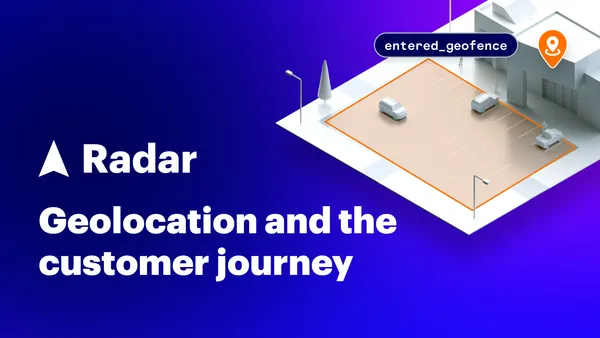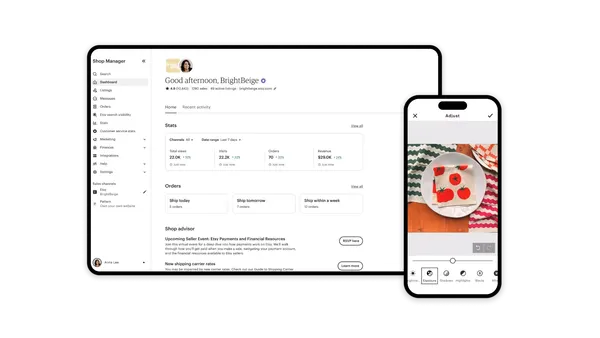Whether it’s been ordering groceries online, registering for a COVID-19 vaccine, or buying the hottest pair of sneakers, chances are you’ve seen a virtual waiting room in the last year.
The concept behind this ecommerce UX trend is pretty simple: if traffic isn’t overwhelming, no shoppers see the waiting room. But if the number of online visitors exceeds a website or app’s capacity, they’re redirected to a customizable waiting room. Then once it’s their turn they’re throttled back to the website or app in a controlled first-come, first-served order.

When online retailers use a virtual waiting room, it’s because their business is successful—so successful that their site is at risk of being overwhelmed. They’re driving high traffic to the site, and there’s intense demand for their products. Online retailers use a virtual waiting room to avoid becoming victims of their own success.
From a user experience perspective, it might not seem intuitive to have shoppers wait to purchase online goods. But as we all know from real life, there’s wide variety in the quality of customer experiences while waiting. Compare your wait at the post office to the dazzling, interactive customer experiences at a Disney theme park, for example.
Top ecommerce and product managers know that, when done well, a virtual waiting room can actually boost the ecommerce user experience. The ability to deliver a fair user experience they can be proud of, paired with online retail skyrocketing nearly overnight, helps explain the surge in virtual waiting rooms in 2021.
Let’s review the 7 user experience benefits prompting online retailers to adopt virtual waiting rooms right now.
1. They prevent dreaded crashes & slowdowns
To understand the recent spike in retailers using virtual waiting rooms, you first need to understand one crucial point.
When retailers are using a virtual waiting room, it’s often because the alternative is a slow or crashed website. These are the two worst-case scenarios from a user experience perspective.
The downtime statistics are sobering. 79% of those who experience poor website performance will avoid shopping with the retailer in the future. And lost orders can easily balloon into the hundreds of thousands of dollars.
A virtual waiting room acts as a safety net for retailers, protecting 24/7 against sudden peaks in online visitors. The way virtual waiting rooms work, online shoppers don’t see the waiting room in normal circumstances.
When retailer websites have available capacity, shoppers don’t even realize the virtual waiting room is in place. When retailers do send visitors to a waiting room, it’s evidence of traffic peaks that could otherwise overwhelm their sites.
A virtual waiting room frees retailers’ websites to sell at their maximum potential, without crashing and damaging their user experience, brand, and bottom line.
RELATED: Run Online Sales Confidently, No Matter the Demand
2. They deliver online fairness
If traffic peaks aren’t a problem, retailers use virtual waiting rooms to achieve online fairness.
This is common with limited-edition product launches, such as sneaker releases. There might be 10,000 sneakerheads going after 100 pairs of shoes.
All things equal, who should get access?
Virtual waiting rooms allow randomization of everyone coming early to a sale, just like a raffle. Anyone arriving after the start of the sale gets their place in line in a first-come, first-served order—the gold standard of fairness.
But be aware that not all virtual waiting rooms are able to offer a first-come, first-served wait. So if you’re considering a virtual waiting room, make sure to demand one that helps you deliver the fair customer experience you can be proud of.
3. They help set expectations & allow real-time communication
Picture yourself making a phone call and being put on hold.
Compare your stress level when 1) you’re told what number you are in queue to 2) you hear hold music on a loop.
Which is more stressful? Clearly number 2.
Academic studies show that a positive waiting experience is driven not by how long people wait but how people feel while waiting.
RELATED: The Psychology of Queuing Revealed in 6 Simple Rules
When people are put in line, they want to know why they’re waiting and how long they can expect to wait.
Virtual waiting rooms give retailers the ability to show visitors transparent wait information, like estimated wait time and position in line. Ecommerce and product managers know this information reduces anxiety among their customers.
Retailers use the waiting room page to clearly explain the wait in their own brand voice. Plus they use it as a channel for sending real-time messages to visitors in the waiting room, keeping shoppers updated and informed.
This is where a virtual waiting room truly shines compared to a basic waiting page. A page that says “Sorry, we’re experiencing technical difficulties. Please try again later.” is unnerving and does nothing to follow the scientifically-proven principles underlying queuing user experience.

4. They engage visitors
Everyone knows time flies by when you’re busy and slows down when you’re bored.
Virtual waiting rooms allow ecommerce and product managers to embed files, links, and videos about products on the waiting room page. This psychological hack helps make the wait feel shorter. Plus, it helps cross-sell other products or services.
RELATED: How Virtual Waiting Rooms Make Queuing a Positive Experience
Finally, the simple yet elegant addition of a progress bar re-conceptualizes waiting as progress.
5. They support a seamless online experience
When routing online shoppers through a 3rd party tool, retailers want the digital experience to be as seamless as possible. Ideally, customers won’t notice they’re no longer on the website.
The best virtual waiting rooms let you tailor your waiting room so it’s branded, in your brand voice and with your creative.
What’s more, they allow a seamless ecommerce UX between devices. Some virtual waiting rooms allow sending email notifications when it’s the visitors’ turn in line. Shoppers who start on a desktop can then open the email notification on their mobile device, creating a smooth mobile user experience as they maintain their same spot in line.
6. They tap into social proof
Psychology tells us humans are very influenced by what others think and do. We look to what others do to guide our behavior.
Reflect on your own life experience. What’s the simplest shorthand for finding a high-quality restaurant? A line.
Imagine you walk by one restaurant with a long line of customers outside, and a second with no line outside and few customers inside. You’ll assume the first was better, right?. The presence of a line actually makes that restaurant more appealing.
In this “wisdom of the crowd” social proof, seeing others endorsing a product—in this case, evidenced by them standing in line—encourages people to join in.
A virtual waiting room helps generate hype by showing visitors how popular a product is. When visitors see how many others are in line, they know what they are waiting for is also valuable to others.
With social proof validating the value of products, online shoppers are more likely to wait and buy.
7. They can boost sales by increasing conversion rates
When a waiting room is active, it’s true that 100% of visitors may not stick around until they can visit the site. On the face of it, this doesn’t sound like it bodes well for sales.
But remember the point of comparison: the likely alternative is a slowed or crashed website, where few if any customers can place orders.
What’s more, tapping into psychology encourages shoppers to continue waiting and buy once they’re through the waiting room.
We’ve already seen how tactics like updated wait information, transparent messaging, and engaging waiting rooms help create a positive waiting experience. We’ve also learned how social proof entices shoppers to remain in queue.
Then there’s also the sunk cost bias, which describes the human tendency to stick with a behavior or endeavor if we’ve already invested time, money, or effort into it. In marketing, progress bars are known to trigger our sunk cost bias, which is why ecommerce sites clearly show the steps in the purchase path.
An example of clear purchase path progression on Amazon.
A virtual waiting room taps into the sunk cost bias by strengthening the resolve of the customers who remain in line. Those customers who do wait will be most driven to buy, raising conversion rates and likely increasing average order value, too.
That’s what high-end fashion retailer Winkelstraat.nl realized when their waiting room activated during their Black Friday sales. They saw an enormous increase in conversion rates as people felt they should really buy something once they arrived on the site.
Impressively, the increase in the conversion rate can more than offset the reduction in visitors reaching the site.
As a retail administrator writes on G2Crowd review platform for Queue-it’s virtual waiting room:
"A side-effect that we realized was that conversion rate had increased at a level much higher than the reduction in visitors to site, increasing revenue - especially when one of the potential outcomes during peak is server overload."

Retail Administrator
review from G2Crowd
Increasing conversion rate is an important and cost-effective way to get more value from the visitors retailers already have, empowering them to grow their business even faster.
Summing up
Top product managers and ecommerce managers know how devastating a website slowdown or crash can be for their customer experience.
They lean on a virtual waiting room to avoid becoming victims of their own success while delivering a digital shopping experience they can be proud of.
A virtual waiting room keeps their websites and apps from crashing, delivers online fairness, and provides a seamless online experience where customers get transparent, real-time updates on their wait. And by tapping into social proof and increasing conversion rates, a virtual waiting room can actually help lift sales.
The past year’s dramatic shift to online retail, combined with these powerful UX benefits, help explain why you’re likely to see more online retailers using virtual waiting rooms in 2021.










